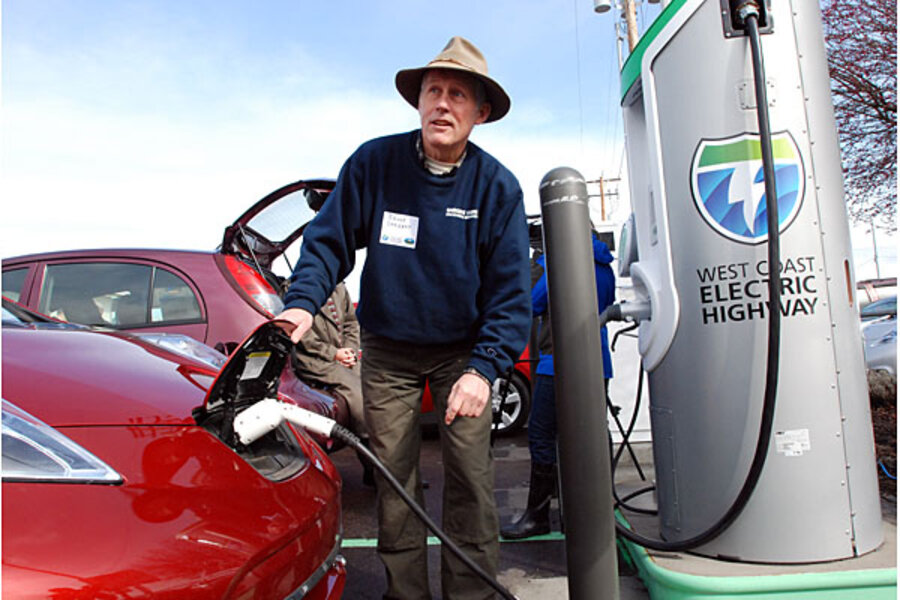How much would you pay for an electric charge valet?
Loading...
At some point, especially if you live in a large city like New York, the chances are you’ve used valet parking to make life a little easier on arrival at a parking garage, hotel, or airport.
But in the age of plug-in cars, could valet parking provide another useful service: managing the recharging of your electric car?
Forbes’ Jeff McMahon thinks so. In a recent column entitled “A 21st Century Job: Electric Vehicle Valet,”McMahon asks if valet charging services could be the way of ensuring that everyone gets the charge they need, and avoiding the dreaded charging station rage.
A fairly new phenomenon, charging station rage is the frustration experienced when an electric car driver discovers a broken charging station, or oneblocked by an internal combustion engine car oranother plug-in car that isn’t actually charging.
Providing valet charging to electric car owners could resolve all three issues, as well as tackling politically sticky questions about electric-car charging etiquette, in locations where there are frequently more electric cars than there are charging stations.
Since installation of extra charging stations could prove costly, especially in locations with limited power capability, a valet service could be a more cost-effective option.
Not only that, but by asking drivers how much charge they need, and when they need it by, a charge station valet system would help prioritize charging and ensure no-one is left stranded.
As McMahon points out, however, because of the times involved to charge most plug-in cars on the market today, charge valet services would work best at locations like train stations, where plug-in cars are likely to be parked longer than a full charge would take.
For high-traffic parking garages with rapidchargers or cars with quicker recharge times, valet parking makes perfect sense.
But while the concept of valet parking for electric cars may sound new, it isn’t.
Whenever Californian automaker Tesla Motors holds a gala event, it offers free valet charging to its Roadster and 2012 Model S customers.
Owners drive up, drop off their keys, and let the valets know how much charge they need, and by when. When they are ready to leave, so is their car.
Similarly, at a recent green car event in the U.K., where many plug-in car owners were expected to attend, Polar, a nationwide charging infrastructure provider, offered free valet charging to visitors.
With five, level 2 charging stations and one Chademo rapid charge station, it was able to ensure visitors’ cars were fully charged before their owners needed to leave.
While the concept is sound, however, it may leave some plug-in owners feeling obliged to pay extra for a service they view as already too expensive.
Would you pay for valet parking in order to ensure your electric car was correctly charged while you were away?
And how much would you pay?







